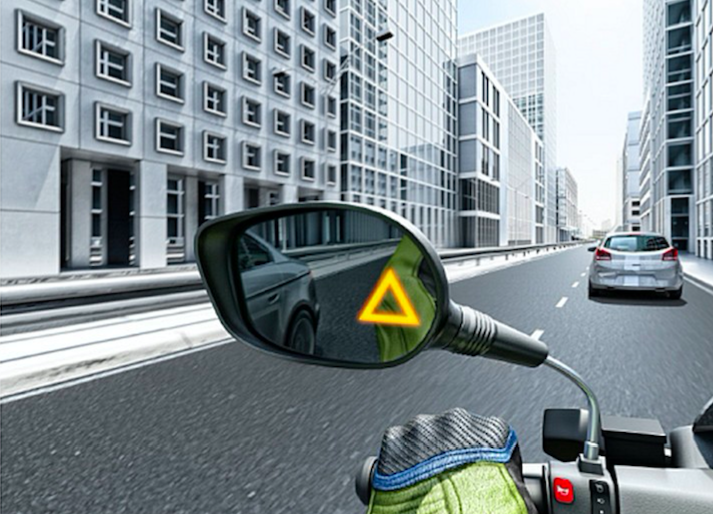Until now, safety enhancing electronic rider aids have all been focused towards the motorcycle and the consequences of rider’s actions. For example, if you squeeze your front brake lever too hard, the electronics will ensure your front tyre won’t lock. Or if you’re a little ham-fisted on cold tyres, the electronics cut the power and solve the problem before you’ve even felt the rear tyre lose traction.
At the late-2015 EICMA motorcycle expo in Milan, Bosch unveiled an electronic rider aid that, for a change, aids the rider rather than the bike. Ladies and gentlemen, we present the first-ever motorcycle-specific Side View Assist.

How it works
It’s simple, really. There are four sensors mounted on the four corners of the motorcycle, two at the front at the bodywork’s left and right extremities and two at the rear. Using ultra-sonic technology which spans a distance of five metres, the sensors detect if there’s a solid object in its vicinity and alert the bike which in turn, like the similar car-based technology, sends a visible warning to the rider via the mirrors. Regardless of how close the bike gets to an object, the system does not intervene with any of the bike’s control.
When it works
You might be wondering why you’d need forward-facing sensors since a rider can generally see everything ahead, but the front sensors are running constantly running what Bosch refers to as a “plausibility check”. This means if the front sensors detect and object before the rear, then the system rightly assumes it’s an oncoming vehicle. However, if the rear sensors detect an object before the front, then the rider is notified there’s something in its blind spot via an optical alert in the rider’s mirror. The system is only active between 25-80km/h and only when the difference in relative speed to other road users is small.
But why?
Wanting to increase enjoyment while responding to the world’s increasing congestion issue is the reasons cited by Bosch for developing the world’s first surround sensor-based assistance system for riders. Because of the complex speed parameters within the system, it’s perfect for heavily congested cities, where changing lanes poses the highest risks to motorcyclists.
Speaking at the firm’s November 2015 unveiling in Milan, Bosch board member Dr Dirk Hoheisel said the driving force behind the development of the technology was to “make motorcycling safer without sacrificing riding enjoyment”.
